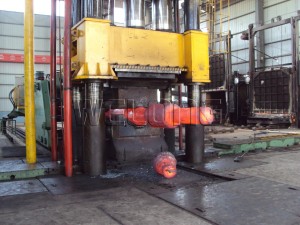Open die forging, a traditional metalworking process, plays a vital role in shaping metal components for various industries. Despite its effectiveness, this forging method comes with its set of challenges that manufacturers need to overcome. In this article, we’ll explore some of the significant challenges associated with open die forging and how they can impact the manufacturing process.
Material Complexity and Variability
One of the primary challenges of open die forging lies in dealing with the complexity and variability of materials. Metal alloys used in forging processes often exhibit varying properties, such as hardness, ductility, and grain structure. These material variations can significantly affect the forging process, leading to inconsistencies in the final product. Manufacturers must carefully analyze and understand the material properties to adjust forging parameters accordingly and ensure product quality.
Dimensional Accuracy and Tolerances
Achieving precise dimensional accuracy and meeting tight tolerances poses another challenge in open die forging. Unlike closed die forging, where the die cavity defines the final shape of the part, open die forging relies on skilled craftsmanship and repetitive hammering to shape the metal. This manual process introduces inherent variability, making it challenging to maintain consistent dimensions across multiple parts. Controlling factors such as hammer stroke, temperature, and material flow is crucial to minimizing dimensional variations and meeting specified tolerances
Grain Structure and Microstructural Integrity
The grain structure and microstructural integrity of forged components significantly impact their mechanical properties and performance. During open die forging, the metal undergoes plastic deformation and recrystallization, leading to grain refinement and alignment. However, improper forging practices or inadequate process control can result in undesirable grain structures, such as coarse grains, non-uniform grain distribution, or internal defects like porosity and inclusions. These grain-related issues can compromise the mechanical strength, fatigue resistance, and overall integrity of the forged parts.
In conclusion, while open die forging offers numerous benefits, including cost-effectiveness and flexibility, it also presents several challenges that manufacturers must address. By leveraging advanced materials characterization techniques, optimizing process parameters, and implementing stringent quality control measures, manufacturers can mitigate these challenges and produce high-quality forged components that meet the stringent requirements of modern industries.
Post time: Apr-28-2024





